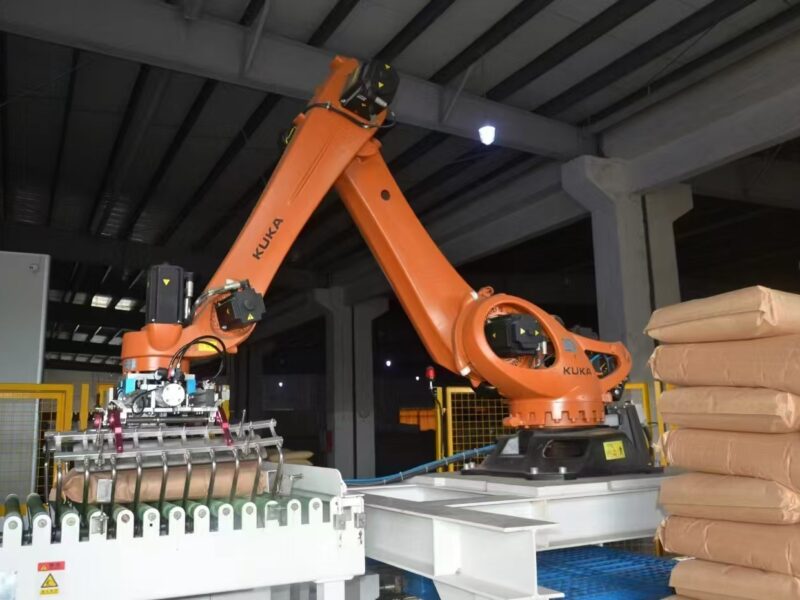
 Introduction
Introduction
For decades, milk and cream have been staples in beverages and food applications worldwide. However, with the rise of plant-based alternatives and functional food ingredients, non-dairy creamer (also known as coffee creamer) has become a competitive option in the global market. Whether in a steaming cup of coffee, a trendy milk tea, or a bakery product, non-dairy creamers now compete directly with traditional dairy products.
But what exactly makes them different? How do they compare in terms of nutrition, flavor, stability, and applications? In this article, we will explore the differences between non-dairy creamer and traditional dairy, helping businesses and consumers understand which option may better fit their needs.
What is Non-Dairy Creamer?
Non-dairy creamer is a powdered or liquid ingredient used to substitute milk or cream. Despite its name, some formulations may contain caseinate, a milk-derived protein, but many modern versions are 100% plant-based. Typical ingredients include:
- Vegetable oils (palm oil, coconut oil, soybean oil)
- Carbohydrates such as glucose syrup or corn syrup solids
- Milk proteins or plant proteins (depending on formula)
- Emulsifiers and stabilizers for solubility
- Flavoring agents for creaminess
The result is a product with longer shelf life, lower cost, and wider functionality compared to fresh dairy.
What is Traditional Dairy?
Traditional dairy includes fresh milk, cream, butter, and condensed milk, all derived from animal sources. Dairy provides a natural balance of:
- Milk fat for rich flavor and mouthfeel
- Lactose (milk sugar) for sweetness
- Casein and whey proteins for nutrition and texture
- Calcium and vitamins for bone health
Dairy is valued for its natural profile and nutritional benefits, but it comes with limitations such as short shelf life, cold chain logistics, and lactose intolerance issues.
Ingredient Comparison
| Feature | Non-Dairy Creamer | Traditional Dairy |
|---|---|---|
| Main Fat Source | Vegetable oils (palm, coconut, soybean) | Milk fat |
| Protein Source | Caseinate or plant protein | Casein & whey |
| Carbohydrate | Corn syrup solids, glucose | Lactose |
| Shelf Life | Long (up to 12–24 months) | Short (5–15 days for fresh milk) |
| Storage | Room temperature (powdered form) | Refrigerated |
| Cost | Generally lower | Higher |
| Suitability for Lactose-Intolerant Consumers | Yes (lactose-free versions) | No |
| Applications | Coffee, milk tea, bakery, ice cream | Beverages, desserts, dairy products |
Taste and Texture Differences
- Non-Dairy Creamer:
Provides a smooth, creamy texture but usually lighter than real cream. Some formulas are designed to mimic dairy cream very closely, especially in coffee and milk tea. - Dairy:
Offers a naturally rich, full-bodied flavor with a slight sweetness from lactose. However, consistency can vary depending on fat content and freshness.
Shelf Life and Storage
One of the biggest advantages of non-dairy creamer is long shelf stability. Powdered creamers can last up to two years without refrigeration, while dairy products require strict cold chain management and spoil quickly once opened. For businesses such as instant coffee manufacturers, milk tea shops, and bakeries, this logistical advantage is significant.
Nutrition Profile
- Dairy is naturally rich in protein, calcium, and vitamins, but it also contains lactose and saturated fats. For lactose-intolerant individuals, dairy can cause digestive discomfort.
- Non-dairy creamer often has lower protein and calcium content but can be fortified with vitamins, minerals, or plant proteins. Some creamers also reduce saturated fat by using healthier oils, appealing to health-conscious consumers.
Cost and Efficiency
From a cost perspective, non-dairy creamer is more efficient for large-scale production:
- Lower raw material cost compared to dairy cream
- Easier transport and storage
- No refrigeration needed (powder format)
- Consistent flavor and quality regardless of seasonality
For businesses, this means higher profit margins and reduced risks in the supply chain.
Applications in Different Industries
1. Coffee
- Dairy: Preferred by traditional coffee drinkers for natural flavor.
- Non-dairy creamer: Dominates the instant coffee mix market (3-in-1 coffee). It dissolves quickly, balances bitterness, and provides creaminess without the perishability of fresh milk.
2. Bubble Tea (Milk Tea)
- Dairy: Sometimes used in premium milk tea shops, but requires refrigeration.
- Non-dairy creamer: Widely used due to stability, smooth texture, and richer flavor consistency. It is the backbone of the global bubble tea boom.
3. Bakery and Confectionery
- Dairy: Provides authentic butter flavor but is costly.
- Non-dairy creamer: Used to enhance texture, reduce costs, and stabilize formulations in bread, cakes, and cookies.
4. Ice Cream
- Dairy: Creates rich, creamy ice cream but can be expensive.
- Non-dairy creamer: Used in frozen desserts for cost-effective creaminess and stability.
Consumer Preferences
Consumer choice often depends on lifestyle and dietary needs:
- Health-conscious consumers may prefer dairy alternatives with lower fat or sugar.
- Lactose-intolerant or vegan consumers rely on non-dairy creamers.
- Premium markets still value traditional dairy for its natural authenticity.
- Mass markets favor non-dairy creamers for affordability and consistency.
Future Outlook
The future of both dairy and non-dairy creamers is likely to coexist:
- Dairy will remain dominant in premium beverages and gourmet applications.
- Non-dairy creamers will continue to expand in mass-market coffee, milk tea, and bakery products, especially with innovations in plant-based proteins and healthier oils.
- Hybrid products may emerge, combining dairy and plant-based creamers to balance taste, nutrition, and cost.
Conclusion
Non-dairy creamer and traditional dairy each bring unique advantages to the food and beverage industry. While dairy offers natural flavor and nutrition, non-dairy creamers provide cost savings, convenience, and inclusivity for lactose-intolerant and vegan consumers. For businesses, the choice often comes down to application, target market, and product positioning.
As the demand for plant-based and functional foods grows, non-dairy creamers are set to play an even more important role in the future of beverages and processed foods.